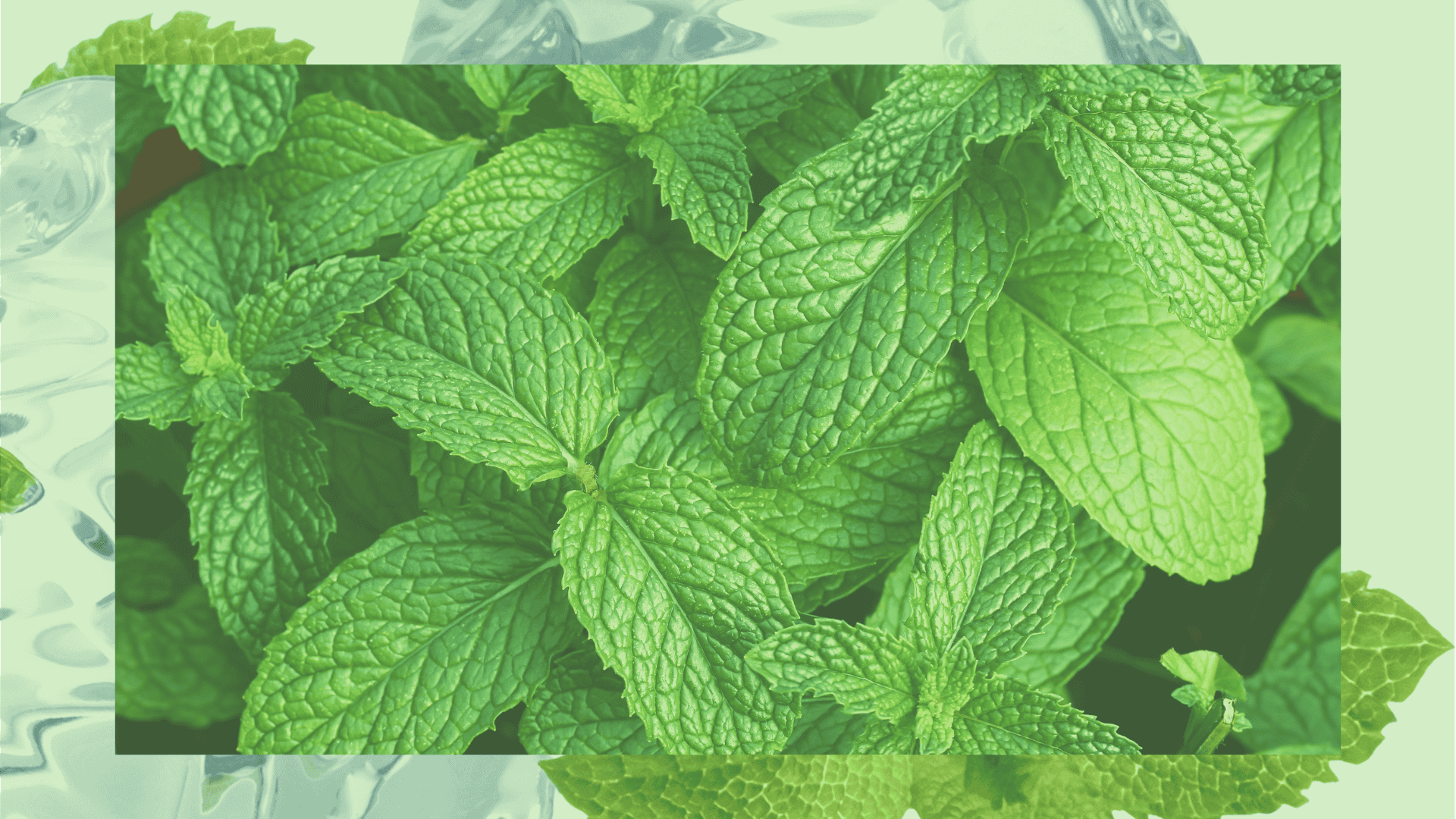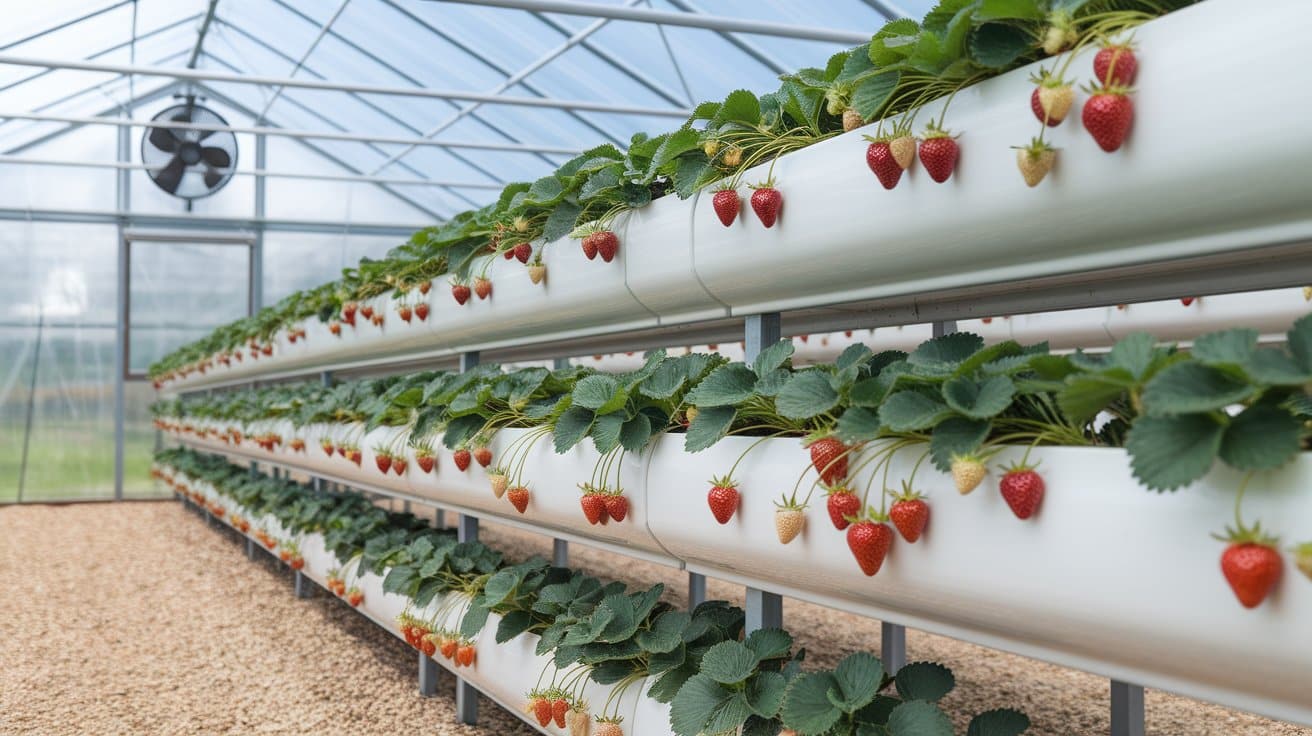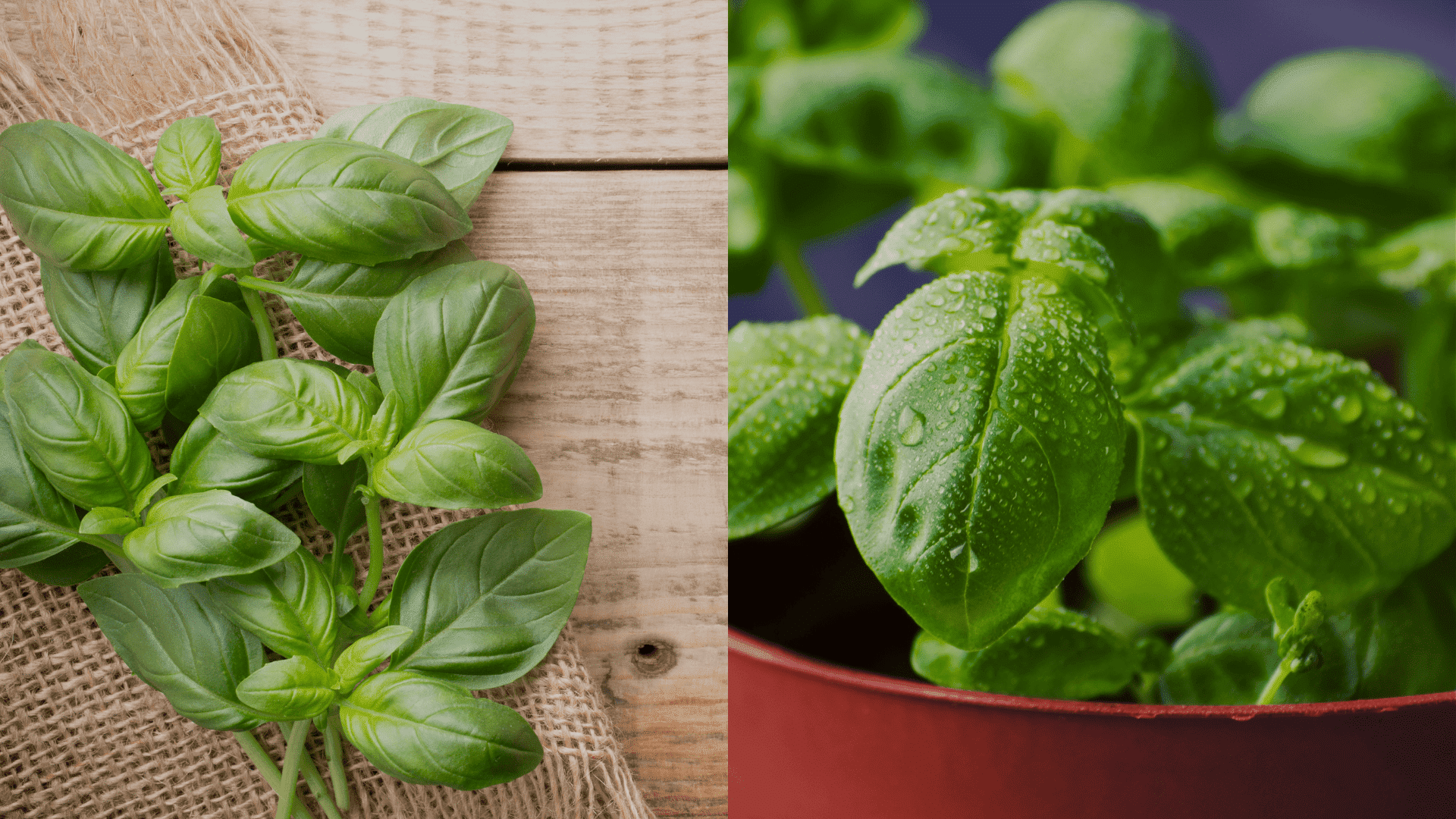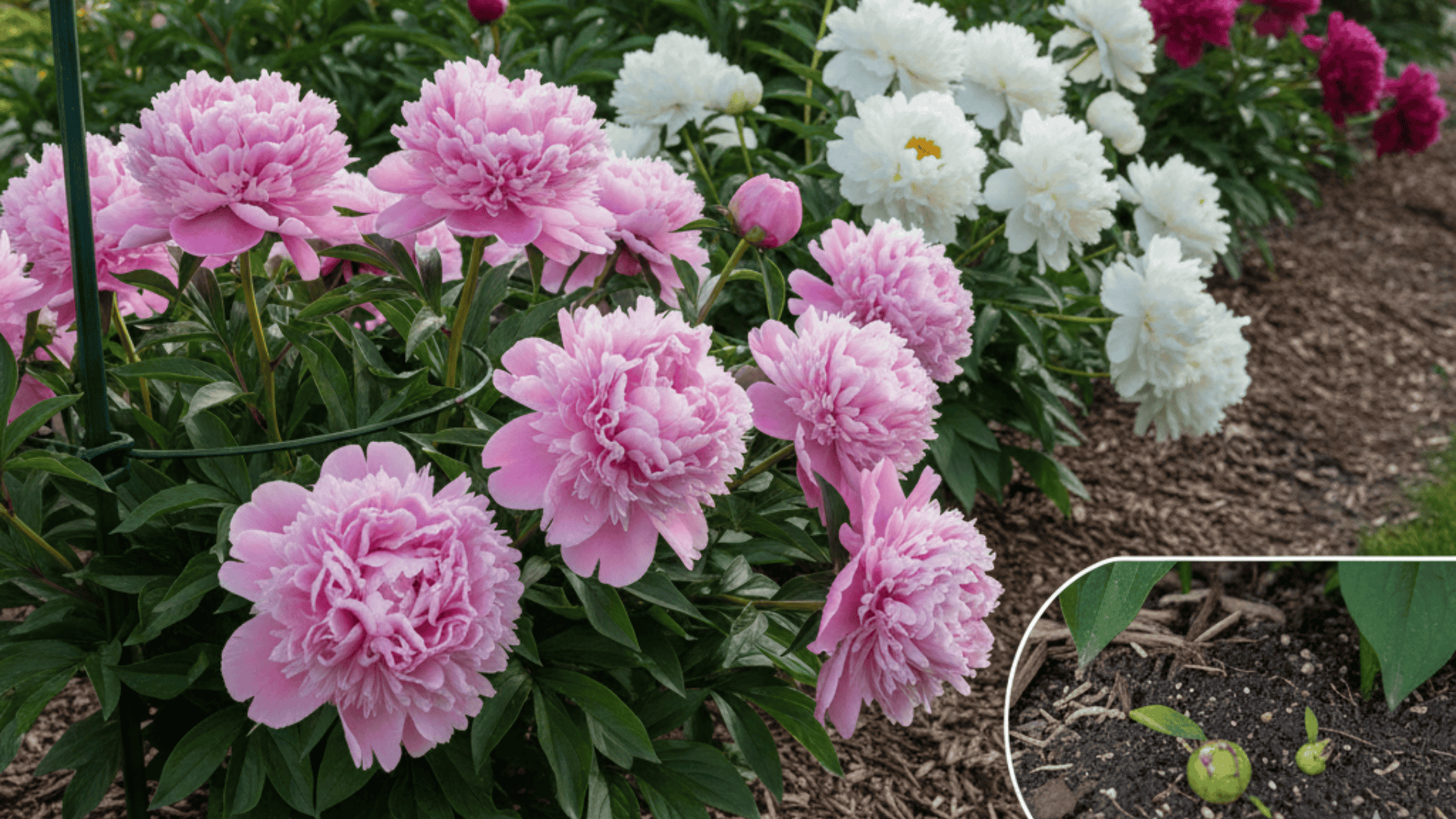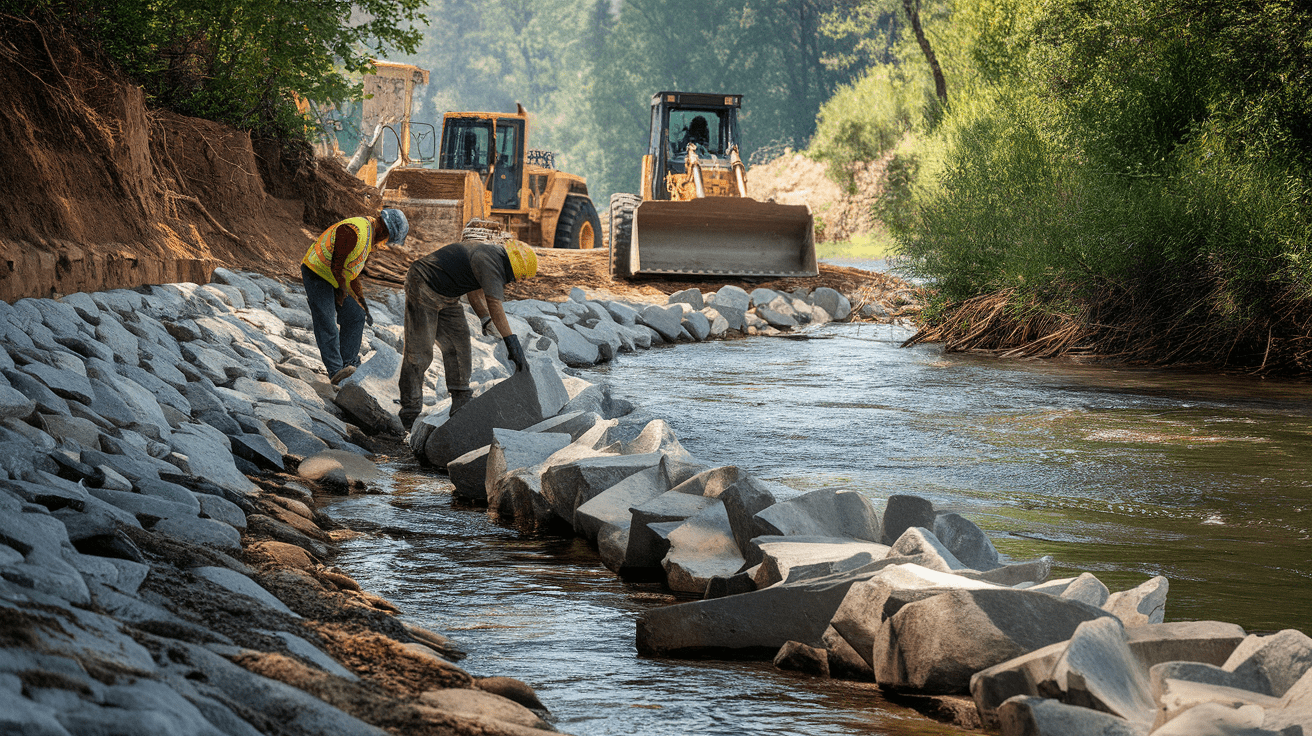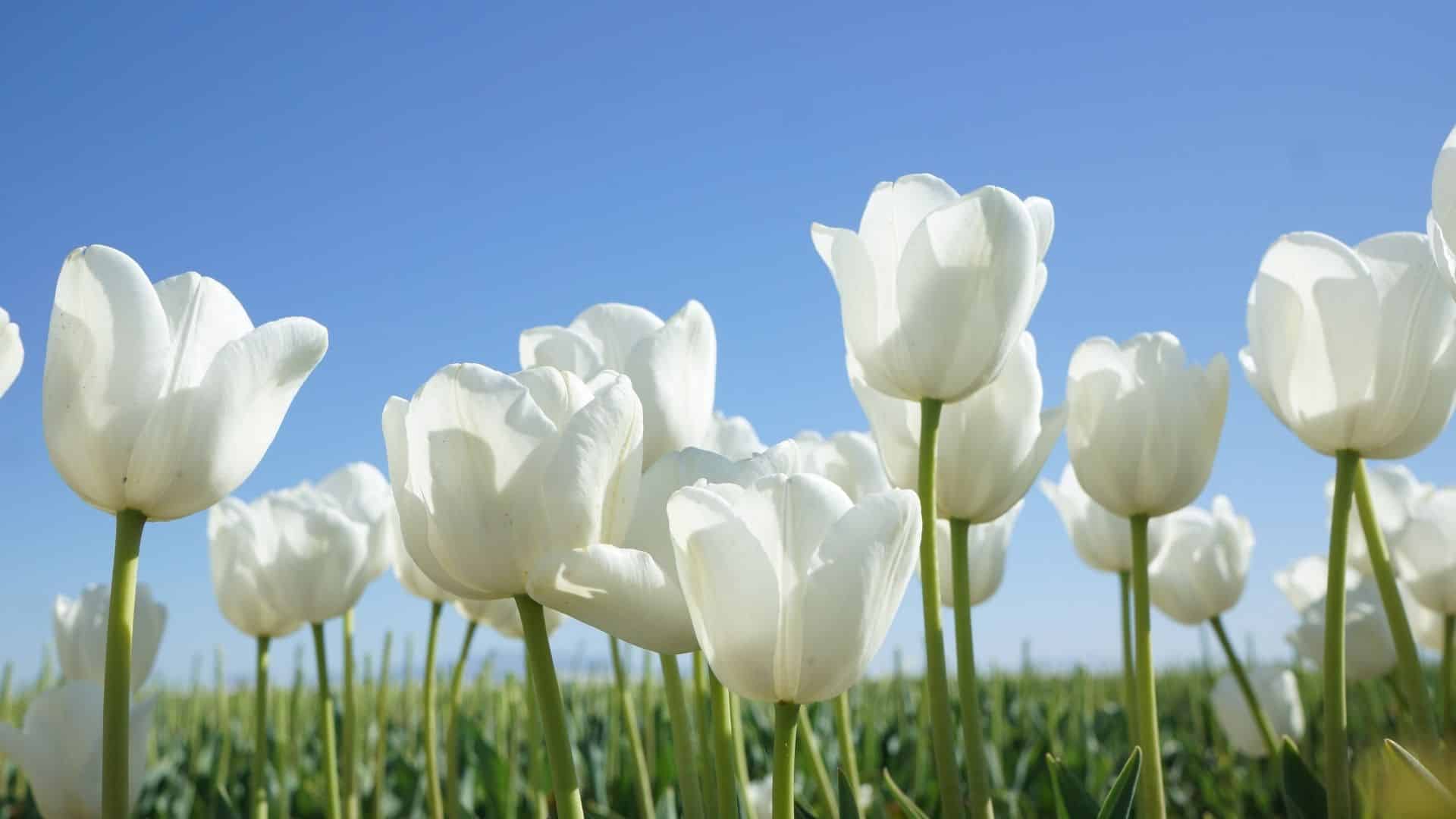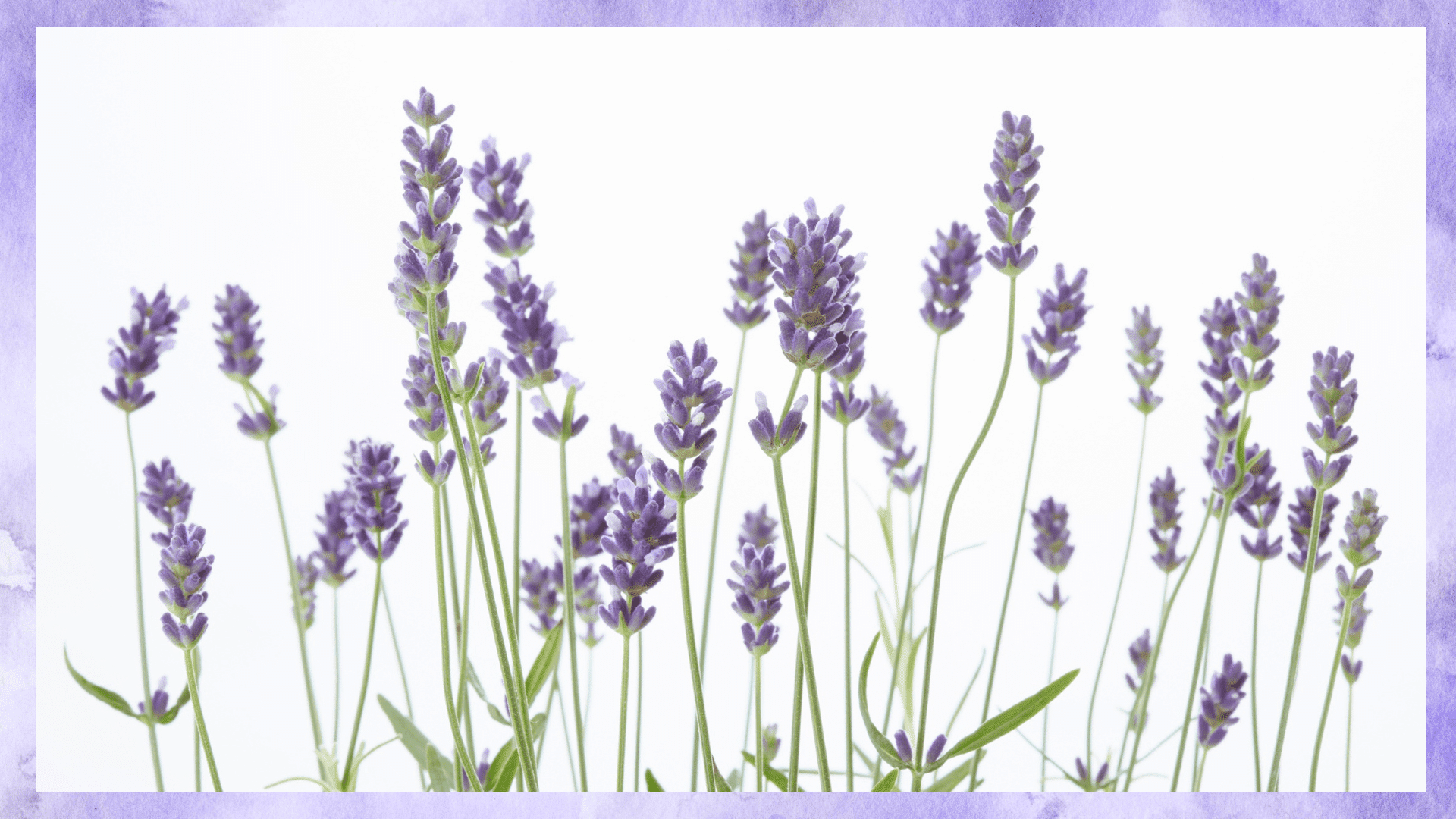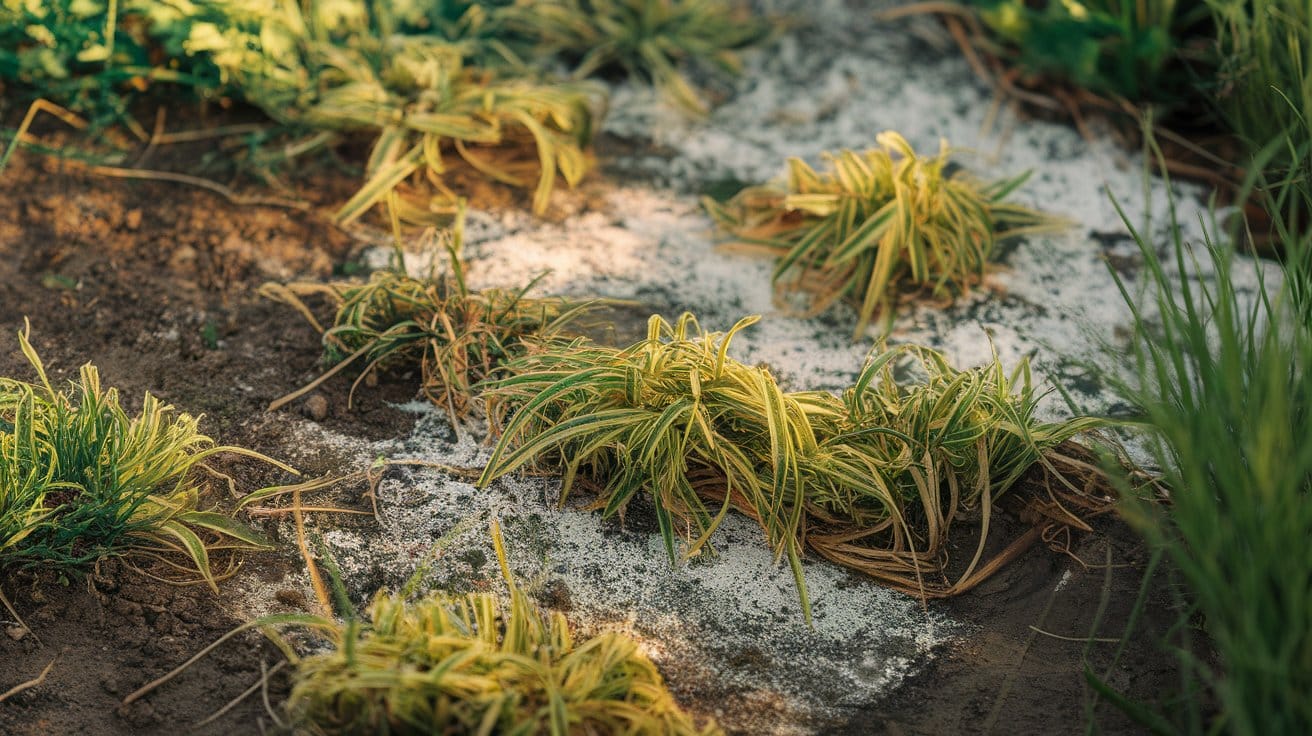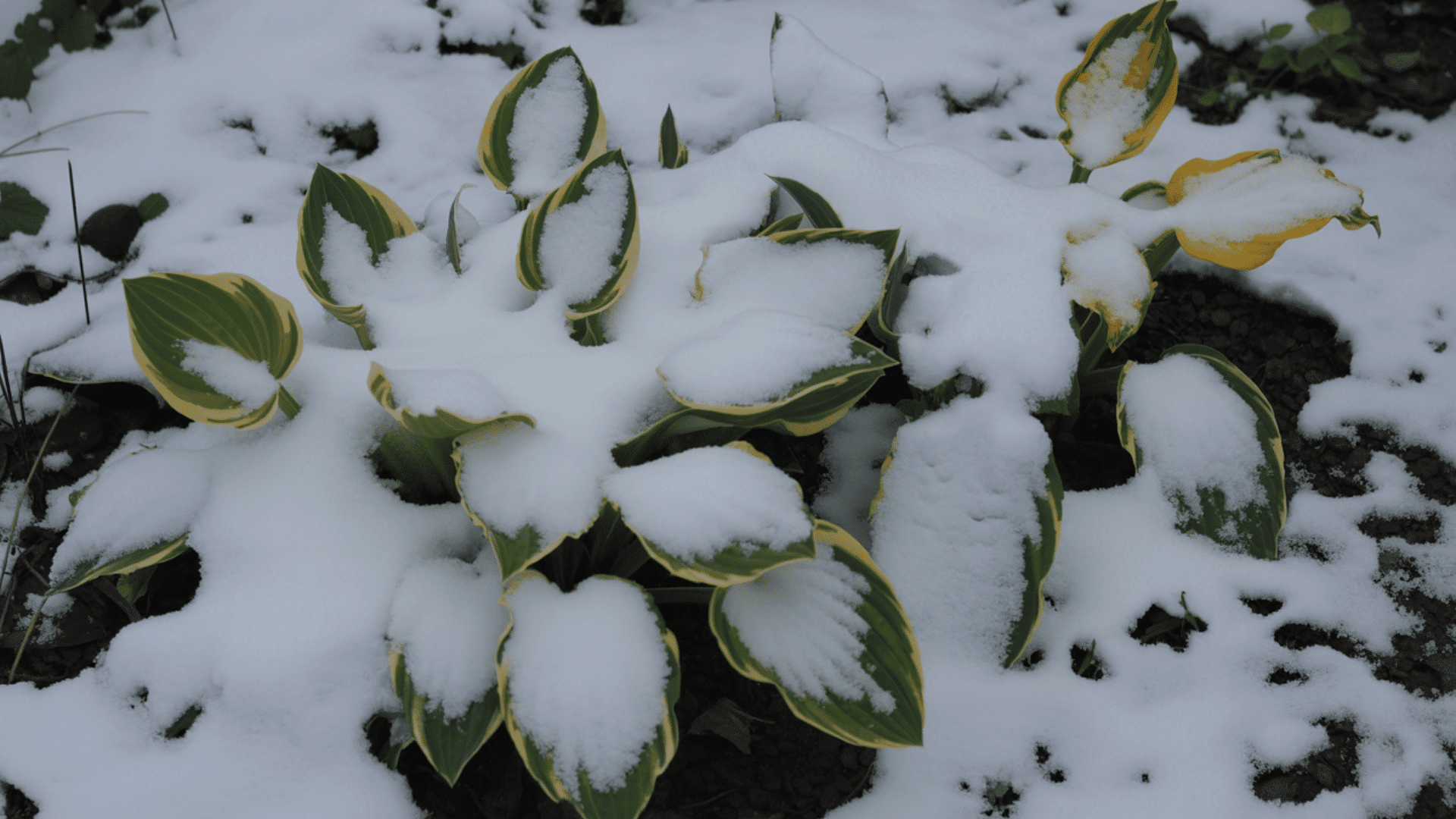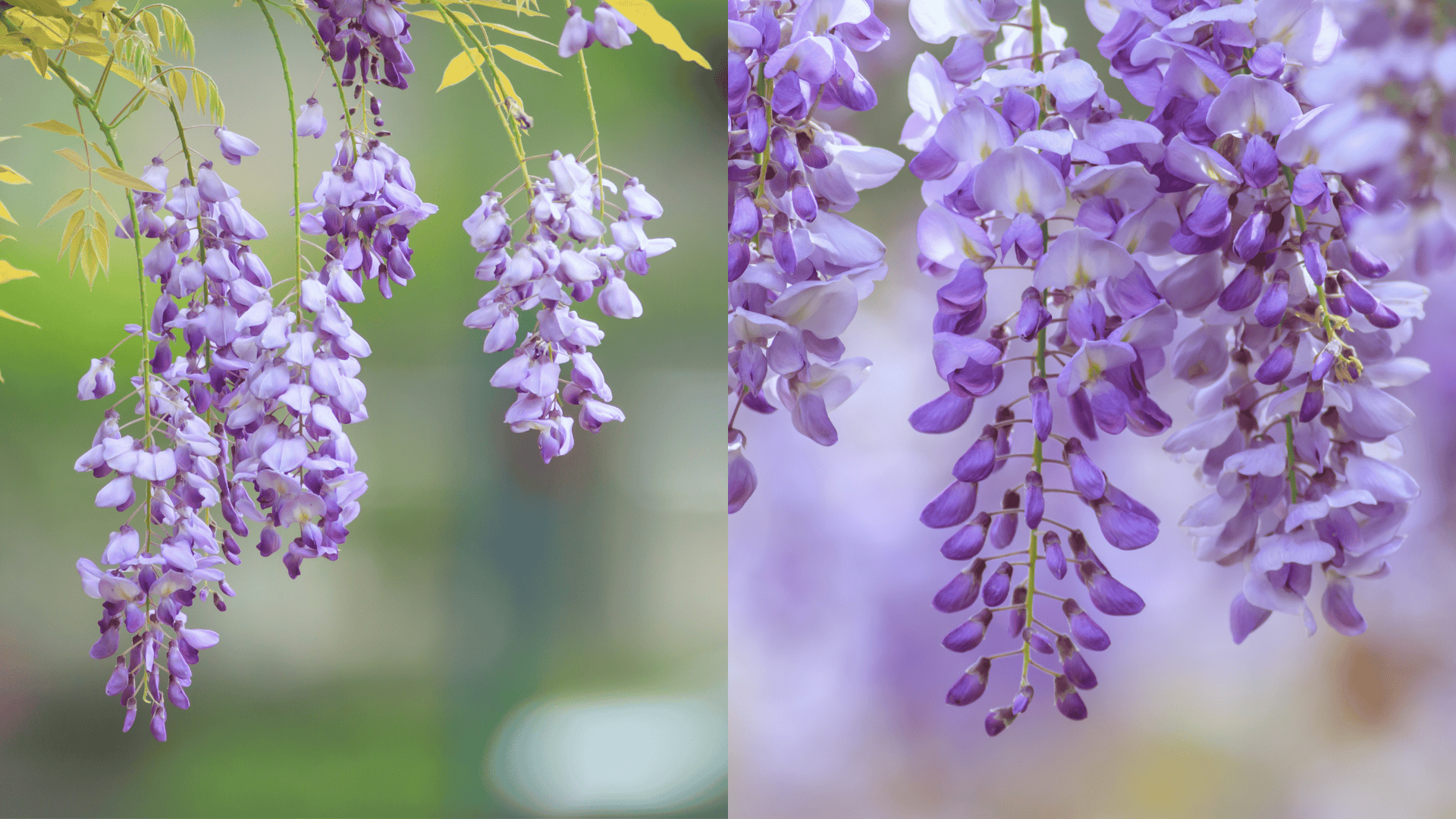Mint loves moisture but dislikes soggy roots, making watering one of the trickiest parts of keeping it healthy and flavorful.
Many gardeners either overdo it or let the soil dry too much, leaving their plants wilted, pale, or prone to root rot.
Finding that perfect balance is key to strong growth and aromatic leaves that keep your kitchen stocked.
In this blog, you’ll learn how often to water mint in different conditions, signs of overwatering or dryness, and simple techniques to maintain steady, healthy growth throughout the year.
How Often to Water Mint?
Mint’s watering routine depends on its growing environment.
Soil type, sunlight, temperature, and pot size all influence how fast water evaporates.
Mint planted in garden soil holds moisture longer, while indoor and potted mint tends to dry out faster.
Knowing these differences helps you water efficiently and keep your plants lush throughout the season.
How Often to Water Mint in Garden Beds?
In-ground mint generally requires1–2 inches of water per week during summer.
Instead of applying all at once, divide this into two or three smaller waterings so the soil absorbs moisture more effectively.
This method prevents runoff, supports deeper root growth, and helps the plant remain consistently hydrated in hot conditions.
How Often to Water Mint in Outdoor Containers?
Mint grown in outdoor containers tends to dry out more quickly than garden soil.
During summer, watering every 2–4 days is usually enough, but daily watering may be necessary in extreme heat or strong winds.
Monitor the soil regularly to ensure roots stay moist without becoming waterlogged.
How Often to Water Mint Indoors?
For mint grown indoors, water every 3–7 days, depending on the temperature, humidity, and container size.
Always check the top inch of soil before adding more water, as indoor environments can vary.
Consistent observation helps maintain balanced moisture, preventing both underwatering and overwatering problems in household conditions.
How Often to Water Mint Seedlings and Young Plants?
Young mint plants need evenly moist soil to establish strong roots.
Water them often enough to prevent the soil from drying, but avoid waterlogging.
Since seedlings and transplants can’t recover easily from drought stress, consistent moisture during this stage is critical for healthy development and steady growth.
How to Know It’s Time to Water Mint?
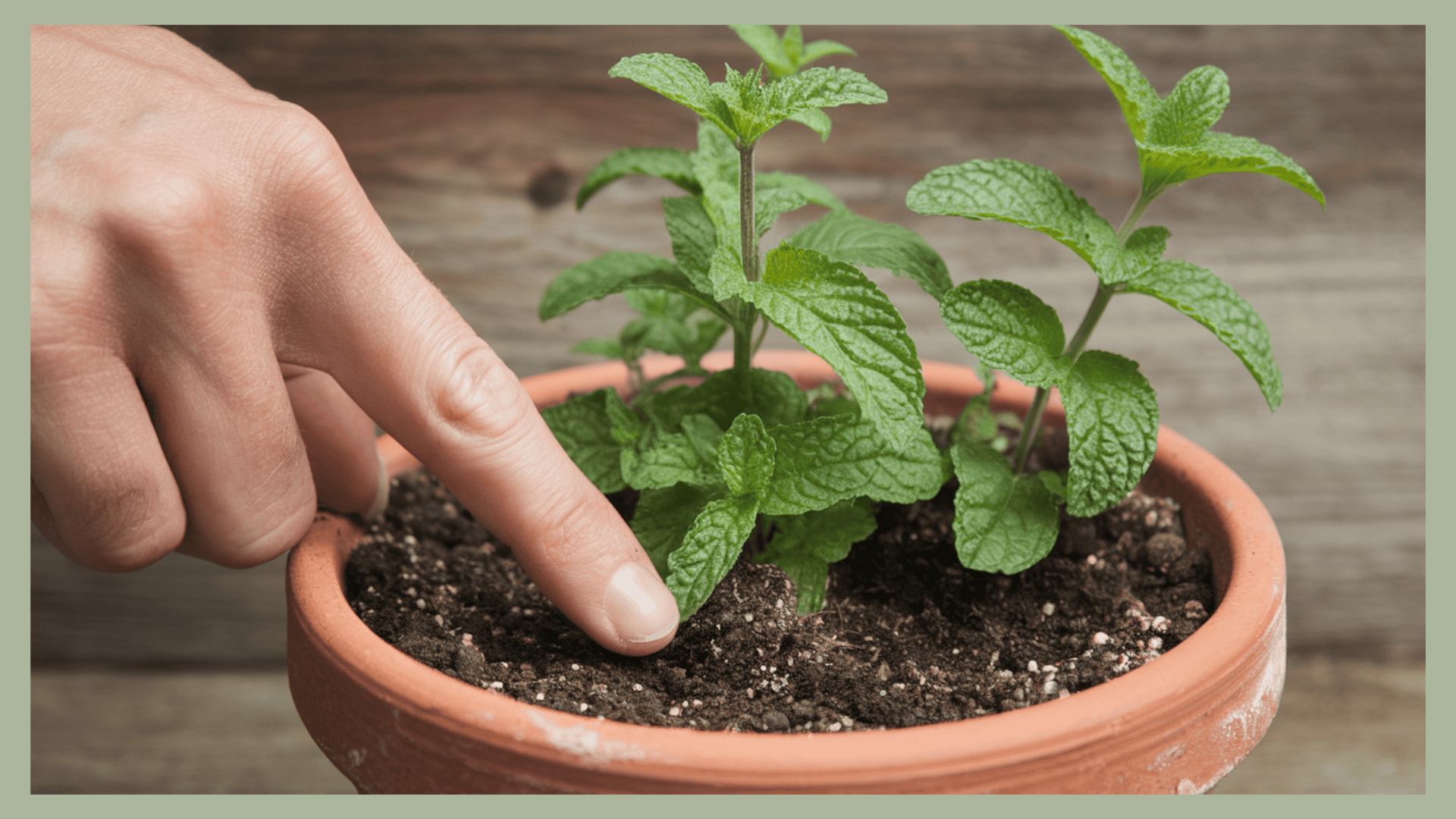
Forget rigid schedules, the healthiest mint plants come from observation, not the calendar.
By learning a few simple checks and paying attention to plant signals, you’ll always know when it’s time to water.
| Method | What to Look For | What It Means | What to Do |
|---|---|---|---|
| Finger Test | Soil feels dry at a 1-inch depth | The plant needs water | Water thoroughly until the excess drains out |
| Pot Weight Test | Pot feels unusually light | The soil has dried out | Water the plant; over time, you’ll learn the weight difference |
| Underwatered Mint | Wilting leaves even in cool mornings; soil pulls away from edges | The plant isn’t getting enough water | Water deeply and consistently to restore hydration |
| Overwatered Mint | Yellow or pale lower leaves; soft stems; sour smell from the soil | Roots are suffocating from too much moisture | Let the soil dry out before watering again; improve drainage if needed |
Factors That Change Mint Watering Frequency
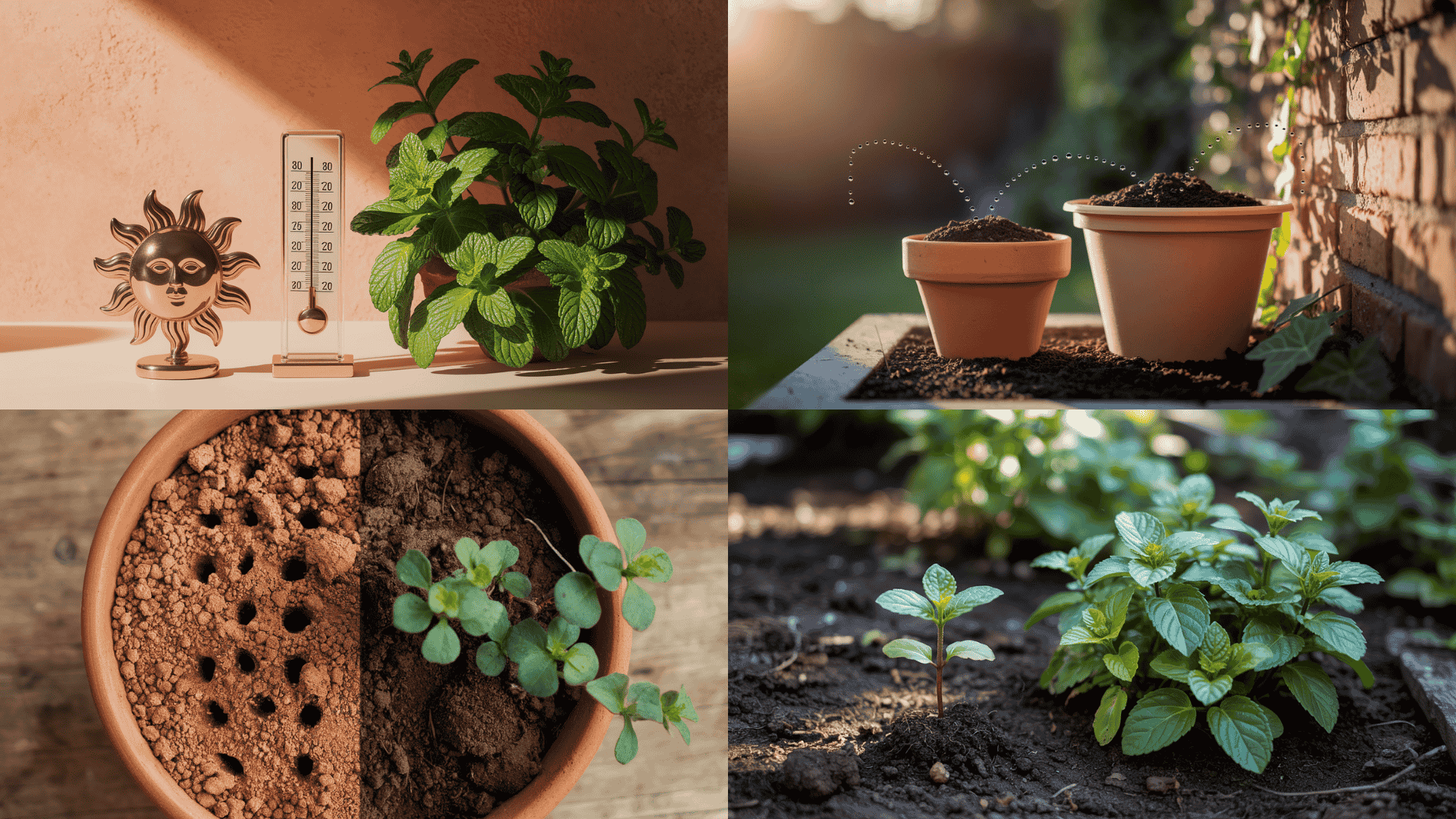
No two mint plants have identical watering needs. Understanding the variables helps you adjust your care routine throughout the season.
1. Weather Conditions
Mint growing in full sun dries out faster than mint in partial shade. Hot weather increases water loss through the leaves. When temperatures climb above 85°F, expect to water more often.
Humidity plays a role, too. Mint prefers moderate humidity around 40–50%. In very dry climates, the soil loses moisture quickly.
2. Pot Size and Material
Small pots (under 8 inches) hold less soil and dry out in 1–2 days during warm weather.
Larger pots (12 inches or more) can go 3–5 days between waterings.
Terracotta pots are porous and allow moisture to evaporate through the sides.
These need more frequent watering than plastic or glazed ceramic pots, which hold moisture longer.
3. Soil and Drainage
Mint thrives in well-draining soil.
Avoid heavy clay soil, which traps water and suffocates roots, and overly sandy soil, which dries too fast.
The ideal mix should absorb water quickly and drain excess within minutes.
Mixing in compost helps balance moisture retention and drainage, reducing the risk of root rot and yellow leaves.
4. Growth Stage and Pruning
Lush, fast-growing mint uses more water than young plants.
During spring and early summer, growth can increase rapidly, so watering needs rise.
Regular harvesting and pruning also boost new leaf growth, which increases the plant’s water demand.
How to Water Mint the Right Way?
How you water matters as much as how often. The right method ensures water reaches the roots, not just the surface.
Good watering habits also prevent disease, reduce waste, and keep mint growing strong.
-
Method: Water the soil level to keep leaves dry. Apply slowly until the soil is damp, and empty saucers within 30 minutes to avoid root rot.
-
Soil Prep and Mulch: Mix compost into the soil for moisture and drainage. Add 1–2 inches of mulch, keeping it an inch from stems.
-
Container Setup: Use pots with drainage holes. Larger pots stay moist longer, while terracotta dries quickly, so choose a slightly bigger size if using clay.
Conclusion
Watering mint doesn’t have to be complicated.
The top inch of soil is your best guide when it’s dry; it’s time to water.
Container plants need more frequent attention than in-ground beds, and summer heat increases water demand.
Pay attention to your specific conditions: pot size, climate, and how fast your mint is growing.
Adjust your routine as seasons change.
With these tips in mind, you’ll find the right rhythm for your mint. The reward is a healthy, fragrant plant that keeps producing fresh leaves for months.
Have questions about your mint plant?
Share your watering challenges in the comments below. We’d love to help!
Frequently Asked Questions
Should Mint Plants Be Watered Every Day?
Daily watering is usually unnecessary for mint. It’s only helpful during extreme summer heat or for very small pots that dry out quickly. In most conditions, check soil moisture before watering again.
Is Rainfall Enough for Mint Plants?
Yes, rainfall can meet a mint plant’s water needs. Track weekly totals and aim for 1–2 inches, including both rain and manual watering, to ensure soil remains evenly moist without becoming soggy.
When Is the Best Time to Water Mint?
Early morning watering works best, giving mint enough time to absorb moisture before the sun heats up. Avoid evening watering because damp leaves overnight can increase the risk of fungal disease.
How Do I Know if Mint Is Overwatered?
Signs of overwatering include yellow leaves, weak stems, and soil that stays wet for several days. Healthy mint should spring back after watering, while soggy soil slows growth and damages roots.
Do Mint Plants Need Less Water in Winter?
Yes, winter care requires less frequent watering. Growth slows indoors, so mint often needs water only once every one to two weeks. Always let the soil partly dry before watering again.

